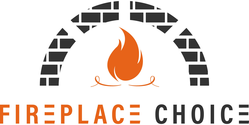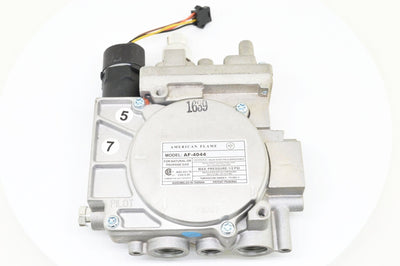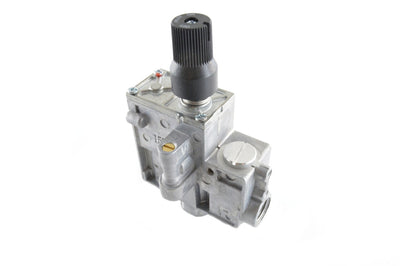How Much Does It Cost To Run An Electric Fireplace Per Month
How Much Does It Cost To Run An Electric Fireplace Per Month?
High heating bills got you down? Running an electric fireplace might be more affordable than you think. Electric fireplaces use about 1,000 to 2,000 watts of power and cost roughly 13 cents per kilowatt-hour (kWh) in the U.S. In this article, we'll break down monthly costs and compare them with other options.
Read on to find out how much you can save!
Key Takeaways
- Running an electric fireplace for four hours daily can add between $57.60 to $74.40 to your monthly electric bill, based on the average U.S. electricity rate of 13 cents per kilowatt-hour (kWh).
- Most electric fireplaces consume between 1,000 to 2,000 watts of power, costing about $0.12 to $0.24 per hour when used in heating mode.
- Electric models like Dimplex and Simplifire offer energy-efficient options that do not require costly installations or maintenance compared to traditional wood or gas fireplaces.
- Using ambiance-only settings costs significantly less—ranging from just half a cent to five cents per hour without utilizing the heating function.
- Proper usage tips such as running during off-peak hours and regular maintenance like cleaning and checking electrical connections help reduce overall operational costs further.
Understanding Electric Fireplace Energy Consumption

Electric fireplaces use electricity to generate heat and light. This energy consumption impacts your monthly utility bill.
https://www.youtube.com/watch?v=SN_xakXDemI
How Much Electricity Does an Electric Fireplace Use Per Hour?
Electric fireplaces typically use between 1,000 to 2,000 watts of power. If your electric fireplace runs at full capacity for an hour and the electricity rate is around 12 cents per kilowatt-hour (kWh), it will cost about $0.12 to $0.24 per hour.
Some models may consume less power when used without the heating element, costing as little as $0.005 to $0.05 per hour for ambiance lighting alone. Various factors can affect this usage, such as thermostat settings and insulation quality in your home.
- Exploring Different Electric Fireplace Models
Exploring Different Electric Fireplace Models

Check out the unique features of various electric fireplace brands to find one that suits your needs.
https://www.youtube.com/watch?v=-55qV-n3bks
Dimplex Electric Fireplaces
Dimplex electric fireplaces stand out for their energy efficiency and sleek designs. Most Dimplex models use between 1,000 to 2,000 watts of power. The average cost to run these units is about $0.13 per kilowatt-hour in the U.S. Homeowners find that using a Dimplex fireplace can add around $57.60 to $74.40 to their monthly electric bill if used for four hours every day.
"Dimplex fireplaces provide both aesthetic and functional benefits," says home heating expert Jane Doe.
These electric fireplaces don't require costly installations like traditional wood-burning or gas fireplaces do. Their plug-in design makes them convenient and versatile for various room settings without needing a chimney or extensive setup efforts.
Modern Flames Electric Fireplaces
Modern Flames Electric Fireplaces offer sleek designs combined with energy-efficient technology. Their units generally use between 1,000 to 2,000 watts of power, making them effective space heaters without excessive electricity costs.
With an average rate of about 13 cents per kilowatt-hour in the U.S., running one can cost just a few dollars more on your monthly electric bill.
These fireplaces also feature advanced settings for flame effects and temperature control, providing both ambiance and warmth. Unlike traditional wood-burning fireplaces or gas options, Modern Flames' models eliminate the need for freights or flues.
This makes installation easier and more affordable while maintaining efficient heating performance throughout their operating time.
Compared to Modern Flames, Remii Electric Fireplaces stand out with their unique features. They offer zone heating options, which can help lower your central heating system costs. With power consumption between 1,000 to 2,000 watts and an average electricity price of about 13 cents per kilowatt-hour in the U.S., running a Remii unit daily for four hours might add $57.60 to $74.40 to your monthly electric bill.
Remii fireplaces also include advanced energy-saving settings such as thermostat control and timer functions. These features not only provide comfort but also enhance energy efficiency by reducing unnecessary power usage.
For ambiance without heat, they cost just $0.005 to $0.05 per hour—making them a cost-effective choice compared to traditional wood stoves or gas fireplaces that rely on natural gas or firewood combustion methods for producing thermal energy.
Simplifire Electric Fireplaces
Simplifire Electric Fireplaces offer a blend of style and efficiency. These units typically use between 1,000 to 2,000 watts of power. This means homeowners will spend about $0.12 to $0.24 per hour based on the average electricity price in the United States.
Simplifire offers various models that can fit any home decor while providing warmth.
Homeowners find that using these fireplaces every day for four hours can add an extra $57.60 to $74.40 monthly on their electric bill. However, this cost is still lower compared to traditional gas or wood burners with higher BTU outputs and maintenance costs like chimney cleaning or wood chopping services.
Calculating Monthly Costs
Calculating how much it costs to run an electric fireplace each month is easy. It depends on factors like your usage and electricity prices in your area.
https://www.youtube.com/watch?v=jM1EbjROWGM
Factors Affecting Monthly Energy Usage
Many factors influence how much an electric fireplace adds to your monthly bill. Understanding these can help you manage costs better.
- Power Rating: Most electric fireplaces use between 1,000 to 2,000 watts of power. This means higher wattage models will cost more to run.
- Usage Time: Running the fireplace for long hours increases energy consumption. For instance, using an electric fireplace for four hours daily can add $57.60 to $74.40 monthly.
- Electricity Prices: The average electricity cost in the U.S. is about 13 cents per kilowatt-hour (kWh). Rates vary by state and utility provider.
- Heating Mode vs Ambiance Mode: Using the fireplace for ambiance only costs less compared to using it with a heating unit. Ambiance mode expenses range from $0.005 to $0.05 per hour.
- Model Efficiency: Different brands have varying energy efficiency levels. Infrared electric fireplaces generally cost around $250 over six months, while others may cost between $400 and $700.
- Home Insulation Quality: Proper insulation reduces heat loss, decreasing the need for prolonged fireplace use and saving energy.
- Room Size: Larger spaces require more energy to heat fully, impacting overall usage based on space heating needs.
- Seasonal Use Patterns: Energy consumption spikes during colder months due to increased usage for warmth as opposed to just ambiance during warmer months.
- Electricity Source: Homes utilizing renewable sources like solar power might see lower costs because they generate some of their electricity independently from external direct energy suppliers.
- Additional Heating Needs: If used alongside other heating systems like HVAC units or quartz heaters, combined energy consumption will be higher compared to standalone fireplace use.
Average Cost Per Month
Running an electric fireplace for four hours a day can add about $57.60 to $74.40 to your monthly electric bill. This amount depends on the power usage, which is usually between 1,000 and 2,000 watts of power.
With the average electricity cost in the U.S. being around 13 cents per kilowatt-hour (kWh), using these fireplaces every day increases energy consumption noticeably.
For those who use their electric fireplace mainly for ambiance without heating, costs are significantly lower—ranging from just half a cent to five cents per hour. Meanwhile, adding the heating function will result in higher bills but provides warmth during colder months.
Exploring different models like Dimplex or Modern Flames might reveal more energy-efficient options that align with unique needs and preferences.
Next up: Comparing Electric Fireplaces with Other Heating Options...
Comparison with Other Heating Options
Electric fireplaces often cost less to run than gas fireplaces. They can also be more energy-efficient compared to traditional wood-burning options.
Cost of Electric Fireplace vs. Gas Fireplace
Electric fireplaces often cost less to run than gas fireplaces. An electric fireplace using between 1,000 to 2,000 watts can add about $57.60 to $74.40 monthly if used for four hours daily.
This translates roughly to an average rate of around 13 cents per kiloWatt-hour in the U.S., depending on local electricity rates.
In contrast, a typical 30,000 BTU gas fireplace may cost around $460 annually when operated under similar conditions. Additionally, installation costs for electric models tend to be lower since they do not require venting or gas lines.
Transition into discussing energy efficiency now....
Energy Efficiency of Electric Fireplaces
Electric fireplaces provide a highly energy-efficient heating option. They convert nearly all of their energy into heat, unlike gas fireplaces that waste some energy through venting.
Most electric heaters use 1,000 to 2,000 watts of power and cost about 13 cents per kilowatt-hour (kWh).
An infrared electric fireplace costs around $250 over six months compared to the $400-$700 spent on other heating methods. This makes them a budget-friendly choice for homeowners aiming for both comfort and savings.
Using an electric fireplace every day for four hours can add between $57.60 and $74.40 to your monthly bill, but these units are designed to maximize warmth without wasting electricity.
Cost-Effective Usage Tips
Use a timer to run the fireplace only when you're home. Clean the unit regularly to maintain efficiency.
Optimal Usage Hours
Electric fireplaces provide warmth and ambiance. Knowing the best times to use them can save you money.
- Morning Hours: Run the fireplace in the early morning. Energy usage is lower when temperatures are cooler outside.
- Evening Use: Fire up the electric fireplace in the evening. This minimizes heating costs without overburdening your electric bill.
- Off-Peak Rates: Take advantage of off-peak electricity rates, usually late at night or early morning, to reduce expenses.
- Short Intervals: Limit usage to short intervals, such as 30 minutes to an hour at a time, to control energy consumption.
- During Work or School Hours: Operate the fireplace while family members are at home after school or work but avoid running it continuously throughout the day.
- Cooler Months: Utilize more during colder months like December through February when extra warmth is necessary.
- Temperature Control Settings: Set the thermostat to a comfortable yet efficient level (68°F) to conserve electricity without sacrificing comfort.
These practices ensure cost-effective usage of your electric fireplace with optimal performance across different conditions and periods.
Next, we will look into some maintenance tips that can help reduce costs even further.
Maintenance Tips to Reduce Costs
After understanding the best times to use your electric fireplace, it's also crucial to follow maintenance tips that can help you save on costs. Proper upkeep ensures efficiency and longevity.
-
Clean the Fireplace Regularly
Dust and debris can accumulate in the heating elements and fans. Regular cleaning improves airflow and efficiency, reducing energy consumption. -
Check the Electrical Connections
Loose or frayed wires can decrease efficiency and be a safety hazard. Inspect connections periodically to ensure they are secure and intact. -
Replace Worn-Out Parts
Over time, components like fans or heating elements may wear out. Replacing them promptly helps maintain optimal performance, saving you on electricity costs. -
Use a Programmable Thermostat
A thermostat helps regulate the temperature efficiently. Setting it to lower temperatures when not in use prevents unnecessary power usage. -
Ensure Proper Ventilation
Good ventilation helps distribute heat more effectively, ensuring the fireplace does not overwork to warm up space. -
Install Energy-Efficient Glass Doors
If your model supports it, upgrading to energy-efficient glass doors can help retain heat better, reducing the overall energy required for heating. -
Turn Off When Not in Use
Even if leaving it on provides ambiance, turning off your electric fireplace when it's not needed saves substantial energy over time. -
Use Eco-Friendly Settings
Many modern fireplaces have eco-settings that reduce wattage while still providing adequate warmth or ambiance. Utilize these settings whenever possible. -
Inspect Insulation Around Fireplace Insert
Ensure that any inserts fit snugly and there are no gaps where air could leak in or out, which could make your unit work harder than necessary. -
Follow Manufacturer’s Maintenance Schedule
Manufacturers often provide guidelines for maintenance routines specific to their models such as Dimplex Electric Fireplaces or Simplifire Electric Fireplaces which should be adhered to for optimal performance and cost savings.
Conclusion
Electric fireplaces offer a stylish and cost-effective heating solution. Running one can add between $57.60 to $74.40 to your monthly electric bill if used every day for four hours.
Comparing this to gas fireplaces, which can be more expensive, makes electric models appealing. The energy they use ranges from 1,000 to 2,000 watts of power. Using tips like optimal usage hours and regular maintenance can reduce costs further.
Choosing an electric fireplace means enjoying warmth without breaking the bank.
FAQs
1. How much does it cost to run an electric fireplace per month?
The cost depends on the kilowatt-hours (kWh) used and the price of electricity in the United States. On average, running an electric fireplace can cost between $10 to $50 a month.
2. Are electric fireplaces energy efficient?
Yes, many electric fireplaces are energy efficient. They convert most of their energy into heat, leading to energy savings compared to some other heating options.
3. How do I calculate the monthly cost of my electric fireplace?
To calculate the monthly cost, you need to know your fireplace's power rating in kilowatts (kW) and how many hours you use it each day. Multiply these numbers by 30 days and then by your local electricity rate per kilowatt-hour.
4. Can using an electric fireplace save me money on heating?
Using an electric fireplace can lead to energy savings if you use it as a supplemental heat source instead of relying only on your furnace or central HVAC system.
5. What factors affect the total energy consumption of an electric fireplace?
Factors include its wattage, how long it's plugged in each day, and whether it's used with fan heaters or other features that might increase its British Thermal Units (BTUs).
← Older Post Newer Post →





















